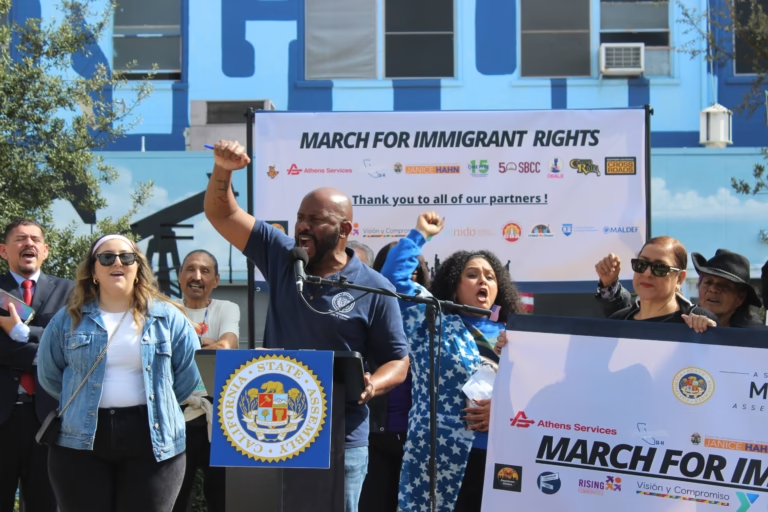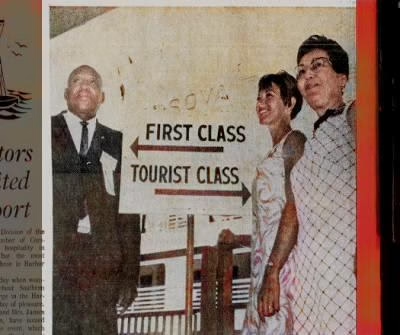DOGE is costing the country — and now Trump and Musk too
It seems that the American public is paying attention after all. The chaos produced by Trump, Musk, and his DOGE delegates is having an effect on the president’s polling numbers. As government payrolls shrink, so does Trump’s approval rating.
In a CNN poll out today, 47% approve of Trump, 52% disapprove, and only 1% have no opinion. Trump’s approval rating is below the start-of-term rating for any recent president, except for Trump in his first term. Support among groups that helped get him elected — young voters, Latino voters, and Black voters — has dropped substantially. Perhaps most significant is that 62% of respondents say he isn’t doing enough about high prices. One could argue he isn’t doing anything about high prices.
The president isn’t going to like today’s Quinnipiac poll. A majority of respondents say that our system of checks and balances is “not working well.” No kidding. Democrats and independents believe Elon Musk has “too much power,” by a lot. On the issues, like the economy, Trump’s numbers are underwater.
While Trump and Musk are preaching to the MAGA choir, it seems the rest of the congregation isn’t buying the sermon.
When Donald Trump took office a month ago (yes, it’s only been a month) he was set up for success. He had won both the Electoral College and the popular vote. A majority of the electorate signaled that they wanted a big change. He controlled both houses of Congress. The Supreme Court had proven more than once that they were on his side. And the Trump 2.0 playbook, Project 2025, was ready and waiting to be executed.
If he had been clever, Trump could have made strategic choices and shrewd decisions. He could have affected the changes he claims everyone wanted without alienating a wide swath of the American people, but that swath is only growing wider.
Instead, Trump came in with a blowtorch, scorching the civil service as he went. His arbitrary cuts and firings are popular with his base, but anger and confusion are mounting as he cedes power to the wealthiest man in the world to do his dirty work.
Elon Musk’s Department of Government Efficiency (DOGE), which was created out of thin air and a stroke of Trump’s pen, has no official role, and none of its employees have been vetted or confirmed by Congress. It does have a directive from the president: cut trillions in waste and fraud from the federal government. To do so, Musk has used a machete rather than a scalpel to make indiscriminate cuts — cuts that quickly will affect every single person in this country, and not in a good way.
DOGE claims it can save upward of $2 trillion and that it has already saved $55 billion. An analysis by NPR says that number is inflated by actual billions. In fact, DOGE had to reduce the stated savings by $8 billion because of a “clerical error.” Think the person who made that multibillion-dollar error will get fired?
According to the DOGE website, the savings have come from a combination of “fraud detection/deletion, contract/lease cancellations, contract/lease renegotiations, asset sales, grant cancellations, workforce reductions, programmatic changes, and regulatory savings.” What the website does not provide is any evidence to back up the claims. It’s not simply a lack of transparency; it is completely opaque.
Perhaps in an effort to make the cuts more palatable, James Fishback, the CEO of an investment firm and an apparent DOGE adviser, proposed on X (where else?) that there be a “DOGE dividend.” He is advocating for “a tax refund check to be sent after the expiration of DOGE in July 2026, funded exclusively with a portion of the total savings delivered by DOGE.” Please note the timing. Those checks would come just before the midterm elections.
Fishback suggested a $5,000 check be sent to every American household. By his math, that’s 20% of the alleged $2 trillion in savings divided by 79 million households.
But what message does this send? Unlike federal money distributed during Covid, these funds would be sent at the expense of thousands of federal workers — many experts in their fields, such as scientists, doctors, and engineers — who have been fired. It is saying to the American people: Here is some cash in your pocket in exchange for no more funding to fix the roof of your kid’s school or to rebuild your home after a hurricane or for scientists to ensure your food is safe.
Besides that, the “dividend” would need congressional approval. It would likely cause a spike in inflation, which by the way is up for the third month in a row after a steady decline. And it would be challenged in the courts. Promising a pie-in-the-sky payday just before an election is right up the president’s street.
Meanwhile, to find those alleged savings, DOGE has fired civil servants across most federal agencies with nary a plan in sight. The only thing that seems to be driving the firings are numbers — numbers of people off the federal payroll, regardless of their actual job and its importance to the health and well-being of the country. Bottom line: Many of these cuts are to agencies and programs conservatives don’t like. The savings seem secondary.
Here is just a sample of the personnel firings and funding cuts (which they are not legally authorized to make):
Department of Agriculture – Fired personnel overseeing the response to the worsening bird flu outbreak just as Trump has paused all communications between federal health agencies. The USDA says it “accidentally” fired and is now trying to rehire some of the bird flu scientists.
National Nuclear Security Administration – Fired hundreds of people tasked with maintaining America’s nuclear arsenal. Criticism of the move was swift, and the administration tried to rehire many of the employees within days but had a hard time contacting them because their government email accounts had been deactivated.
National Institutes of Health – Reduced and in some cases eliminated grants for medical research across the board. The United States government has been the world leader in funding medical science, which has yielded some of the biggest medical breakthroughs.
National Science Foundation – The agency is expected to lose half of its workforce. “Scientists and Democratic lawmakers fear that staff losses of that scale could effectively break the nation’s research and innovation pipeline, with disastrous consequences for the U.S. economy and American citizens,” according to E & E News.
Internal Revenue Service – Cutting hundreds of employees just as tax season gets underway. One wonders how this will affect the timing of refunds.
Federal Aviation Administration – Air safety assistants and mechanics are among the workers who have been fired, though the Trump administration is adamant that the cuts have not affected safety. There have been four plane crashes since the first of the year.
Department of Education – Trump’s plan is to eliminate the entire department. The DOE provides funding to schools for special education, infrastructure, and additional support to the neediest school districts, most in red states. Local taxes pay for 85% of public school funding. States would have to raise taxes to make up the shortfall.
National Oceanic and Atmospheric Administration – The plan is to gut the agency responsible for predicting weather. Yes, that’s right: Trump wants to fire the people who predict and track hurricanes, floods, and droughts as climate change continues to make weather events more severe.
Housing and Urban Development – The department that rebuilds communities after disasters such as hurricanes and wildfires has been cut by 84%. Current rebuilding efforts in North Carolina and Los Angeles would be affected.
How about this staggering hypocrisy in just one sentence: “HUD is carrying out President Trump’s broader efforts to restructure and streamline the federal government to serve the American people at the highest standard,” said a spokesperson for HUD in a statement.
Democrats, who have been caught completely flat-footed by Trump, Musk, et al., might actually benefit from the continued chaos. They don’t have many ways to thwart the president, so maybe what will benefit congressional Democrats most right now is patience. The administration’s willy-nilly approach to governing could be its undoing.
Trouble is that immense damage will already have been done to seriously hurt the country and the world for a long time to come.













 Flood was a man of deep Christian convictions and a lifelong advocate for workers’ rights, racial equality, and community development. Born on June 6, 1897, in Kansas City, Missouri, Flood was the son of a preacher. Despite his religious upbringing, he chose to serve in the U.S. Navy during World War I, enlisting in Colorado. In the early 1930s, he moved to Shreveport, Louisiana, where he joined the Veterans of Foreign Wars (VFW) and worked at a meat processing plant. By 1943, he relocated to San Pedro, California, finding employment as an electrician at Todd Shipyards and beginning a decades-long career in labor and community activism.
Flood was a man of deep Christian convictions and a lifelong advocate for workers’ rights, racial equality, and community development. Born on June 6, 1897, in Kansas City, Missouri, Flood was the son of a preacher. Despite his religious upbringing, he chose to serve in the U.S. Navy during World War I, enlisting in Colorado. In the early 1930s, he moved to Shreveport, Louisiana, where he joined the Veterans of Foreign Wars (VFW) and worked at a meat processing plant. By 1943, he relocated to San Pedro, California, finding employment as an electrician at Todd Shipyards and beginning a decades-long career in labor and community activism.

